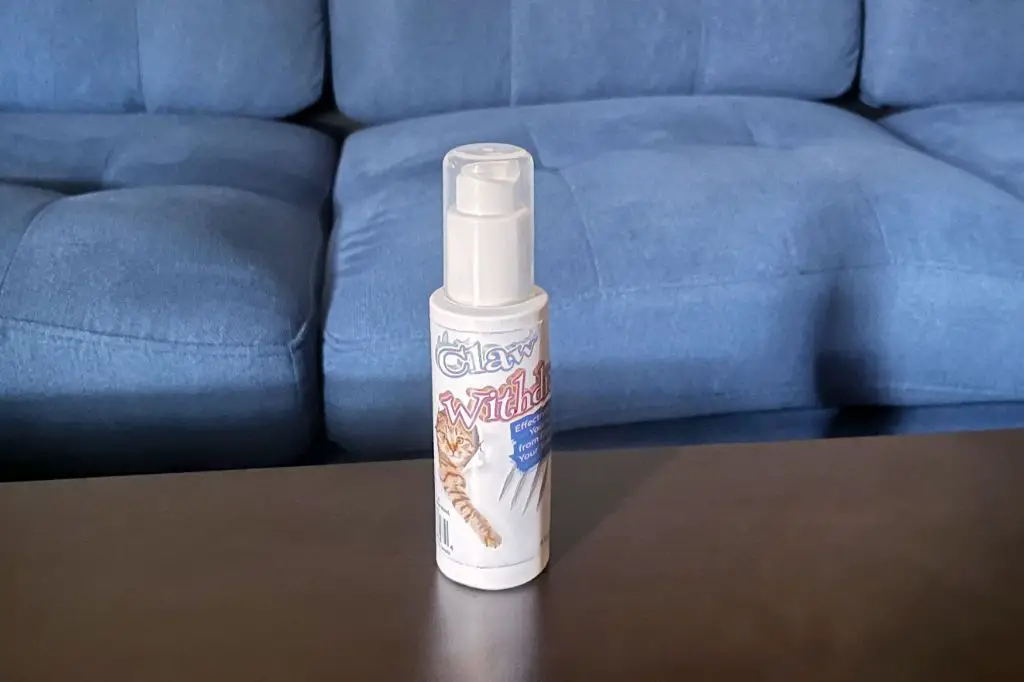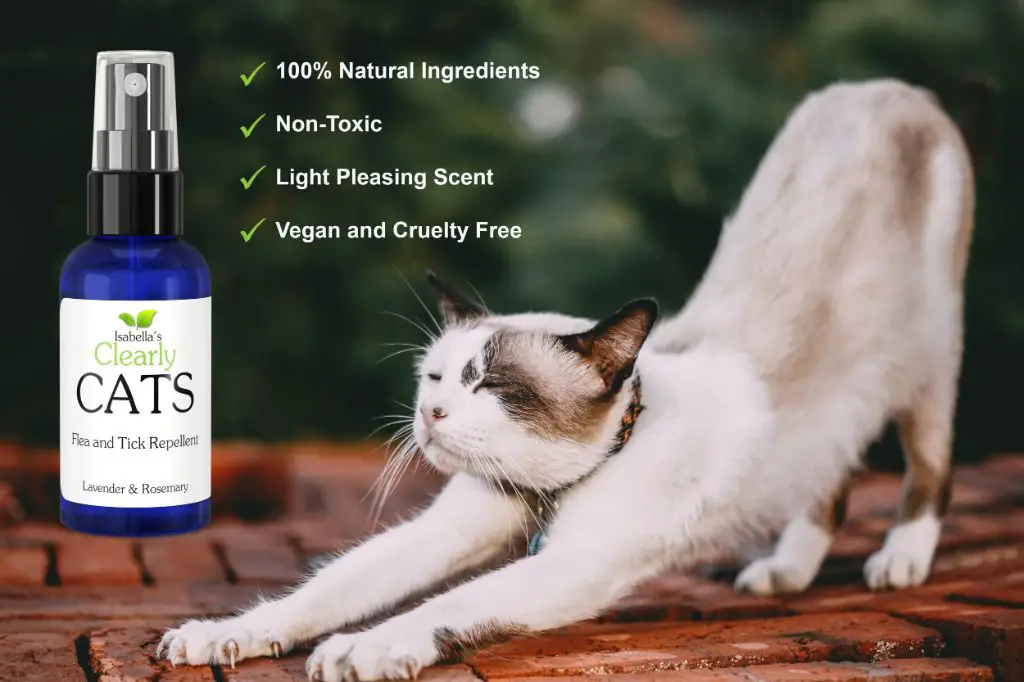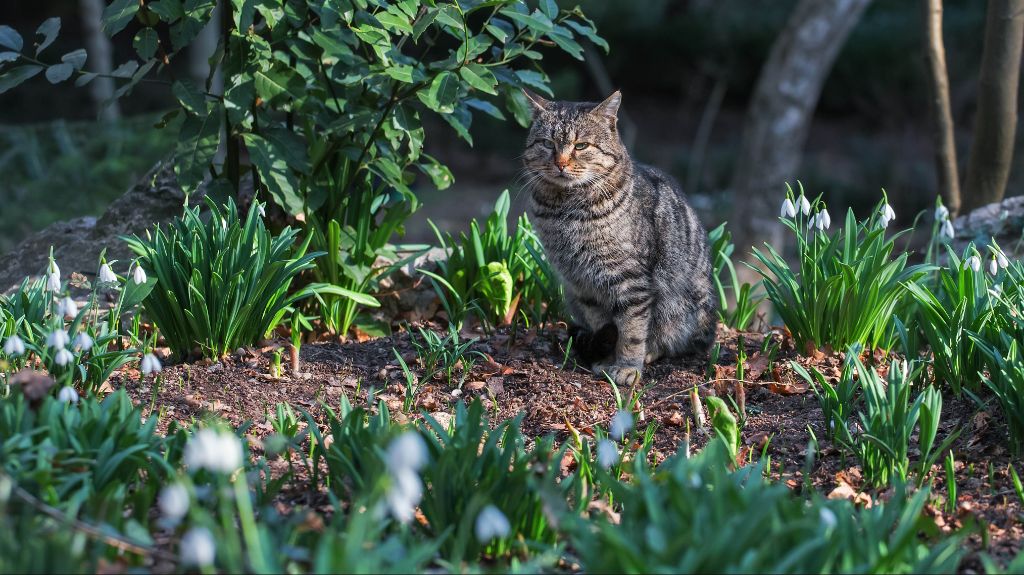What is Cat Repellent?
Cat repellent refers to products designed to deter cats from entering or remaining in an area where they are unwanted. Cat repellents work by creating an unpleasant sensation, smell, sound, or physical barrier that cats find intolerable.
There are several types of cat repellents:
- Chemical repellents – Sprays or granules containing ingredients like capsaicin or Piperine that irritate cats’ sensitive noses and paws.
- Ultrasonic repellents – Devices that emit high-frequency sounds only audible to cats and other animals.
- Physical barriers – Things like plastic carpet runners with protruding spikes, double-sided sticky tape, or chicken wire fencing.
- Smell repellents – Strong odors from citrus, vinegar, coffee grounds, or products with predator urine odors.
When cats encounter these repellents, the irritating sensations, loud sounds, obstacles, or unappealing smells deter them from entering or sticking around in the area. This grants homeowners, gardeners, and property managers a humane way to keep unwanted cats off their property without having to trap or harm them.
How Chemical Repellents Work

Most chemical cat repellents rely on ingredients that cats find unpleasant, triggering their sensitive olfactory systems. Common active ingredients in these repellents include citronella, mustard oil, menthol, eucalyptus oil, and methyl nonyl ketone. When cats detect these odors, the ingredients create an unpleasant sensation, deterring cats from entering areas where the repellent has been applied.
By stimulating irritation or discomfort in a cat’s nasal passages, chemical cat repellents aim to condition cats to avoid treated areas. The repellents create associations between the unpleasant sensations and the locations where cats encounter the odors. Over time, this can train cats to steer clear of places where repellents have been used.
According to The Capital Gazette, cat repellents should never contain toxic active ingredients that could harm cats. Repellents work best when cats can detect their presence and associate the smells with irritation, not actual harm.
How Ultrasonic Repellents Work
Ultrasonic cat repellents work by emitting high frequency sound waves that are unpleasant and irritating for cats to hear. The devices produce sounds at frequencies higher than the normal human hearing range, usually between 25,000 to 50,000 Hz (Source). When cats hear these high-pitched sounds, it creates an annoying sensation that drives them away from the area.

These ultrasonic frequencies are meant to specifically target cats, since their hearing range is far more sensitive compared to humans. However, the effectiveness of ultrasonic cat repellents is debated. Some cats may be more sensitive than others, and it’s possible for cats to eventually get used to the sounds (Source). Environmental factors like weather, obstructions, and distance can also impact how well the sounds transmit. While ultrasonic devices may deter cats initially, their long-term success is limited.
Other Types of Repellents
In addition to chemical and ultrasonic repellents, there are some other types of cat deterrents that work through different mechanisms:
Motion Activated Repellents: These repellents detect a cat’s movement and then emit a startling sound, air spray, or other deterrent. They are triggered only when a cat comes into an area, so they don’t continuously bombard the space. Popular motion activated repellents include the SSSCat Spray and Elite Little Dog.
Electric Shock Repellents: Electric mats or strips give cats a mild static shock when stepped on, which startles them without causing harm. These should be used carefully and ethically. An example is the Kittywalk Deterrent Mat.
Scatter Devices: These loud noisemakers activate randomly or through motion sensors to frighten cats away. They include items like the PetSafe Ultrasonic Bark Deterrent. Use caution placing these near neighbors.
Tips for Using Cat Repellents
To get the most out of cat repellents, follow these tips:
Proper placement is key. Position ultrasonic devices near furniture or areas cats frequent. Place smelly repellents along baseboards, under furniture, and near trash cans. Direct motion-activated devices towards problem areas.1
Maintain repellents regularly. Refill smelly repellents when the scent fades. Replace batteries in ultrasonic devices. Adjust motion sensor angles if needed. Keep repellents dry and functioning properly.2
Combine types for added effectiveness. Use ultrasonic devices with smelly repellents or motion activated sprinklers. The combination of sound, scent, and movement covers more repelling bases.3
Consider training cats away from treated areas. Use treats and praise to redirect cats towards scratching posts and away from furniture. This combines repellents with positive reinforcement.1
Limitations of Cat Repellents
While cat repellents can be an effective tool to deter cats from yards, gardens, and other areas, they do have some limitations to be aware of [1]:
- Not 100% effective for all cats – Some cats may be undeterred by certain repellents, especially if highly motivated by something in the area.
- Cats can become accustomed – Repellents may lose effectiveness over time as cats get used to them.
- Limited range – Most repellents only work in a limited area, requiring reapplication.
- Safety considerations – Certain chemical repellents can be toxic for children, pets, wildlife, and plants if used improperly.
It’s important to monitor repellents to ensure they are working as intended. Persistent cats may need additional deterrents or professional removal. Repellents should always be used according to label directions.
Natural Cat Repellents
There are several natural options for repelling cats that are non-toxic and humane. Many natural repellents rely on scents that cats dislike to deter them from an area.

Certain essential oils like citronella, lavender, eucalyptus, and lemongrass can be used to make cat repelling sprays. The strong scents of these oils are unpleasant and overwhelming for a cat’s sensitive nose.
Cats also dislike the smell of citrus fruits. Spraying lemon or orange peels with water and placing them around areas you want to protect can help repel cats. Some other scents that deter cats include citrus, menthol, coffee grounds, pipe tobacco, mustard, and ammonia.
Using natural repellents is a humane, non-toxic way to keep cats away. However, they may need to be reapplied frequently as the smells can fade over time.
When to Seek Professional Help
In some cases, you may need to seek professional help for a cat repellent issue, such as:
- For severe infestations that over-the-counter repellents cannot control. Professional exterminators have access to stronger formulas not available to consumers (source: https://classactcats.com/blog/when-do-i-need-help/).
- If you’ve tried various repellents over an extended period with no results. A professional can identify why the repellents are not working and devise another solution (source: https://www.tandcvets.com/warning-signs-your-cat-needs-to-go-to-the-veterinarian/).
- To identify entry points into your home or garden that allow pests access. Sealing these entry points is key for effective long-term control (source: https://www.thesprucepets.com/when-to-call-the-vet-for-your-cat-552168).
In summary, it’s best to call in a professional if DIY repellents are not solving the problem after a reasonable trial period. They have more tools at their disposal to identify issues and implement solutions.
Repellent Alternatives
There are several effective alternatives to repellent sprays and devices that can deter cats from yards and gardens. These humane options include deterrent plants, outdoor fencing, and indoor barriers.

Certain plants have scents that repel cats, such as rue, lavender, and pennyroyal. Cats tend to avoid these pungent aromas. Planting them around the perimeter of your yard or garden beds creates a natural repellent border.1 Prickly plants can also deter cats from digging in garden beds or approaching porches and patios. Holly, cacti, and rose bushes all make access uncomfortable with their sharp points and thorns.
Outdoor fencing is very effective for keeping cats restricted to your property only. Fences should be at least 6 feet tall, made of solid wood or vinyl, and have no gaps along the bottom or between slats that a cat could squeeze through.2 Burying a portion of the fence several inches underground will prevent digging underneath. Fencing around specific garden beds creates a secondary barrier.
Indoors, screens on windows and doors should be checked for any openings a cat may tear through. Keep windows closed when not in use. Double-sided tape on surfaces inside discourages cats from jumping up. Motion-activated devices that emit high-pitched sounds, compressed air, or other harmless aversive stimuli also startle cats away from restricted areas.
The Bottom Line
To summarize, some of the most effective options for deterring cats include commercial chemical repellents, ultrasonic repellers, animal scents, pepper-based sprays, and motion-activated devices. Chemical spray repellents containing the active ingredient methyl nonyl ketone offer effective temporary protection against cats. Ultrasonic devices that emit high-frequency sounds can drive cats away as well. Natural deterrents like coyote urine or essential oils from plants like lavender and lemongrass may also work. However, stronger scents like citrus oils can be unpleasant for people too. Motion-activated deterrents like sprinklers or alarms can startle cats away every time they try to enter an area. While repellents can be useful for protecting specific spaces like yards and gardens, be careful about relying solely on scaring cats away. Instead consider more humane deterrents like blocking access to unwanted areas. Focus repellents only on surfaces, not directly on animals. And if neighborhood cats become a serious nuisance, gently speak with owners or contact local officials for humane assistance.

